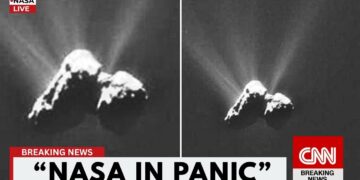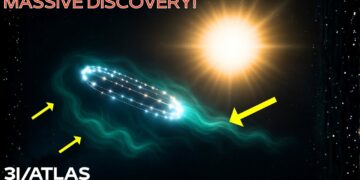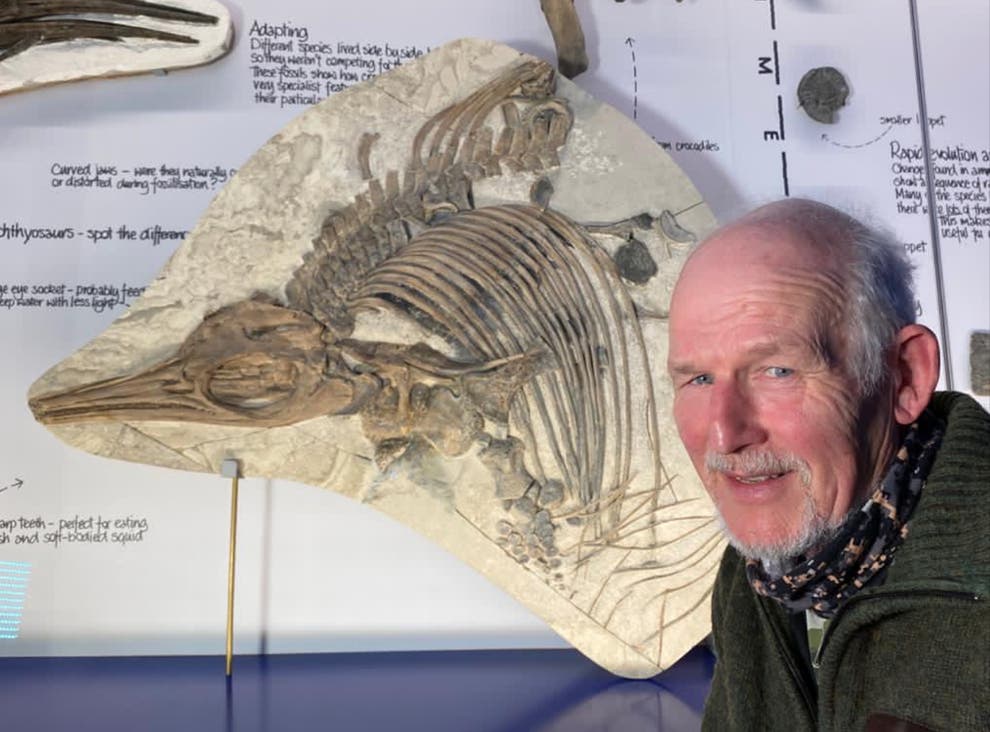Now, you might be missing just one small thing. It’s like being on a long sea voyage and lacking only vitamin C. Elon Musk has issued a stark warning following Voyager 1’s latest perplexing discovery in interstellar space, as the iconic spacecraft sends back data that defies explanation. Musk stresses the urgent need for humanity to prepare for the unknown. What mysteries lie beyond our solar system? Join us as we delve into the implications of this groundbreaking revelation.
The Voyager Missions: A Legacy of Exploration
Launched by NASA in 1977, the Voyager missions represent a remarkable chapter in space exploration. Voyager 1 and Voyager 2 were designed to study the outer planets and have since surpassed their initial goals, becoming humanity’s ambassadors to the cosmos. Voyager 1 launched on September 5, 1977, followed by Voyager 2 on August 20, 1977. Equipped with advanced scientific instruments, these spacecraft captured stunning images and gathered critical data about the planets they visited.
Their primary mission was to explore the gas giants Jupiter and Saturn, along with their moons. Voyager 1’s closest approach to Jupiter in March 1979 revealed a dynamic world, discovering new moons like Metis and Adrastea and capturing detailed images of Jupiter’s atmosphere, including its swirling storms and the Great Red Spot. The data also highlighted the planet’s intense radiation belts. Voyager 2, the only spacecraft to visit Uranus and Neptune, provided groundbreaking insights into these distant worlds. Its closest approach to Saturn in August 1981 revealed intricate details about the planet’s rings and moons, including active geological processes on Enceladus, where geysers were found spewing water vapor and ice, hinting at a subsurface ocean.
Both Voyagers have continued transmitting data long after their planetary encounters, contributing to our understanding of the heliosphere—the bubble-like region dominated by the solar wind. As they venture into interstellar space, they provide invaluable information about the boundary between our solar system and the vast unknown. The Voyager missions symbolize human curiosity and resilience, reminding us of the endless possibilities beyond our world.
Voyager’s Contributions to Understanding the Solar System
The Voyager missions have profoundly expanded our knowledge of the solar system, particularly through their exploration of regions beyond the Sun’s influence. Voyager 1 and Voyager 2 provided the first close-up observations of the outer planets, including Uranus and Neptune, transforming our understanding of these distant worlds. Voyager 2 made history as the first spacecraft to fly by Uranus in January 1986 and Neptune in August 1989, revealing their atmospheres, rings, and moons. Uranus was found to have a unique tilt causing extreme seasons and a complex ring system, while Neptune displayed strong winds and storms, including the Great Dark Spot.
The missions also uncovered fascinating details about the solar system’s moons. Voyager 1 and 2 revealed Io, a moon of Jupiter, as the most volcanically active body in the solar system, with hundreds of active volcanoes. Europa, another Jovian moon, showed evidence of a vast subsurface ocean, raising questions about the potential for life beyond Earth. These discoveries have shaped planetary science, astrobiology, and the search for extraterrestrial life, highlighting the dynamic nature of the solar system’s moons.
Voyager’s Interstellar Journey and Recent Anomalies
Voyager 1 became the first human-made object to enter interstellar space in 2012, marking a transition from the solar system to the interstellar medium. Its observations have provided insights into the heliosphere and the complex nature of interstellar space. Recently, however, Voyager 1 has transmitted puzzling data, including anomalies in its orientation system, which appear random and inconsistent. These unexpected signals have left NASA scientists working to understand their implications for the spacecraft’s condition and mission.
Voyager 1’s data has revealed a complex heliopause—the boundary where the solar wind meets the interstellar medium—challenging existing models. The spacecraft has also detected high electron density, confirming its departure from the Sun’s influence. These findings open new research avenues into the interstellar medium’s properties, including cosmic rays and magnetic fields. The anomalies underscore the challenges of interstellar exploration and the limits of our current understanding.
Mysterious Issues Experienced by Voyager 1
Voyager 1, launched in 1977, is humanity’s farthest-reaching spacecraft, but it faces mysterious challenges in interstellar space. Its radioisotope thermoelectric generators (RTGs), which convert decaying plutonium into electricity, are losing efficiency, raising concerns about powering instruments and communication. Engineers have shut down non-essential systems to conserve energy.
Another issue involves the spacecraft’s attitude control system, with gyroscopes showing unexpected variations, affecting orientation. Communication is also challenging, with signals taking over 22 hours to travel each way, complicating troubleshooting. Additionally, Voyager 1 has detected high-energy cosmic rays and a persistent low-frequency hum in the interstellar medium, raising questions about the environment beyond our solar system.
Deep Space Network: The Communication Lifeline
The Deep Space Network (DSN) is NASA’s critical communication system for deep space missions, including Voyager. With antennas in Goldstone, California; Madrid, Spain; and Canberra, Australia, the DSN ensures continuous coverage for spacecraft like Voyager 1 and 2, now over 14 billion miles away. The DSN’s advanced technology handles faint signals, enabling data transmission and command execution. Its role extends beyond Voyager, supporting missions to Mars, the Moon, and beyond, making it a cornerstone of deep space exploration.
Gravity Assist Techniques in the Voyager Missions
Gravity assist, or the slingshot effect, was pivotal to the Voyager missions’ success, allowing the spacecraft to travel vast distances without excessive fuel. By leveraging the gravitational pull of planets like Jupiter and Saturn, Voyager 1 and 2 gained speed and altered trajectories to reach their targets. Precise calculations were crucial, as the missions capitalized on a rare planetary alignment occurring once every 175 years. This technique made the exploration of multiple planets feasible and set a precedent for future deep space missions.
Voyager’s Cultural Legacy: The Golden Record
The Golden Record aboard Voyager 1 and 2 is a profound cultural artifact, designed as a message for potential extraterrestrial civilizations. Curated by a team led by Carl Sagan, the 12-inch gold-plated copper disc contains 115 images, natural sounds, music from various cultures, and greetings in 55 languages. It showcases humanity’s diversity, achievements, and curiosity, serving as a time capsule drifting through interstellar space.
Persistent Strange Hum Detected by Voyager 1
Voyager 1 has detected a persistent low-frequency hum in the interstellar medium, caused by plasma waves interacting with cosmic rays. This discovery provides insights into the interstellar environment’s density, temperature, and composition, highlighting complex interactions between solar and interstellar matter. The hum also raises questions about sound in space and galactic evolution, informing future research.
Voyager’s Technical Glitches and Recovery Efforts
The Voyager spacecraft face challenges due to aging systems. Declining RTG power requires careful energy management, with non-essential systems turned off. In 2020, Voyager 1 experienced issues with its attitude control system, prompting engineers to use alternative systems. Voyager 2 faced a software glitch in 2021, which was resolved remotely. Despite communication delays, the mission team’s ingenuity ensures continued operation.
Ongoing Concerns About Voyager’s Risks
As Voyager 1 and 2 venture deeper into interstellar space, risks include system degradation, diminishing power, and communication delays. Cosmic radiation poses threats to instruments, and ethical concerns arise about potential encounters with other celestial bodies. These challenges highlight the spacecraft’s remarkable resilience and the mission team’s dedication.
Elon Musk’s Influence and Perspective
Elon Musk has highlighted Voyager 1’s recent anomalies as a reminder of the universe’s mysteries. He emphasizes the need for humanity to prepare for unknown challenges and advocates for becoming a multiplanetary species. The spacecraft’s discoveries underscore the importance of continued space exploration, aligning with Musk’s vision for humanity’s cosmic future.
Numbered Sections
- Voyager 1’s Unprecedented Journey and Recent Anomalies
Voyager 1, launched in 1977, is the farthest human-made object, now in interstellar space. Its discoveries, including Jupiter’s ring system and Saturn’s moons, have transformed our understanding of the solar system. Recent anomalies in its attitude articulation and control system (AACS) have raised concerns, as inconsistent data challenges engineers working across a 41-hour communication delay. Despite these issues, Voyager 1 continues to inspire, symbolizing human ingenuity. - Communication Challenges with Distant Voyager
Voyager 1, over 15 billion miles away, faces significant communication challenges. Signals take over 41 hours for a round trip, requiring meticulous command planning. Declining RTG power and AACS anomalies complicate maintaining the spacecraft’s orientation. Yet, Voyager 1’s ability to transmit data showcases the mission team’s dedication to overcoming these hurdles. - Voyager 1’s Early Discoveries at Jupiter and Saturn
Voyager 1’s 1979 Jupiter flyby revealed a faint ring system and detailed the Great Red Spot’s structure. In 1980, its Saturn encounter uncovered new moons and intricate ring dynamics, providing insights into the planet’s system and its moon Titan. These discoveries reshaped our understanding of gas giants. - Voyager 1’s Exploration Beyond the Solar System
In 2012, Voyager 1 became the first spacecraft to enter interstellar space, detecting changes in solar wind and cosmic rays. Its data on the interstellar medium’s density and magnetic fields has challenged existing models, offering new insights into the heliosphere and beyond. - Voyager 2’s Significant Findings in Interstellar Space
Voyager 2 entered interstellar space in 2018, providing data on the heliopause and interstellar plasma. Its observations of a stronger-than-expected magnetic field and particle interactions have refined our understanding of the heliosphere’s structure and its role in shielding the solar system. - The Heliosphere: Voyager 2’s Discovery of the Sun’s Boundary
Voyager 2’s 2018 heliopause crossing revealed a smooth boundary with increased plasma density and cosmic rays. Its detection of a strong interstellar magnetic field and particle mixing has enhanced our understanding of the heliosphere’s dynamics and its protective role. - Voyager 1 and 2: Contributions to Understanding Moons of Jupiter and Saturn
The Voyagers revealed Io’s active volcanism and Europa’s potential subsurface ocean at Jupiter. At Saturn, they uncovered Titan’s thick atmosphere and Enceladus’ geysers, highlighting the dynamic nature of these moons and inspiring future exploration. - Power and Thruster Challenges Faced by the Aging Voyagers
Declining RTG power and thruster degradation challenge the Voyagers’ operations. Engineers have turned off non-essential systems and switched to backup thrusters to maintain functionality, demonstrating resilience in the harsh environment of interstellar space. - Strategies for Extending the Operational Life of the Voyager Missions
Careful power management, use of backup systems, and software adaptations have extended the Voyagers’ lifespans. These strategies ensure continued data collection, informing future missions like the Interstellar Probe. - The Legacy and Future Impact of the Voyager Missions
The Voyager missions have revolutionized our understanding of the outer planets, their moons, and the heliosphere. Their Golden Records symbolize humanity’s outreach to the cosmos. Their data continues to inspire missions like Europa Clipper, ensuring a lasting legacy in space exploration.























